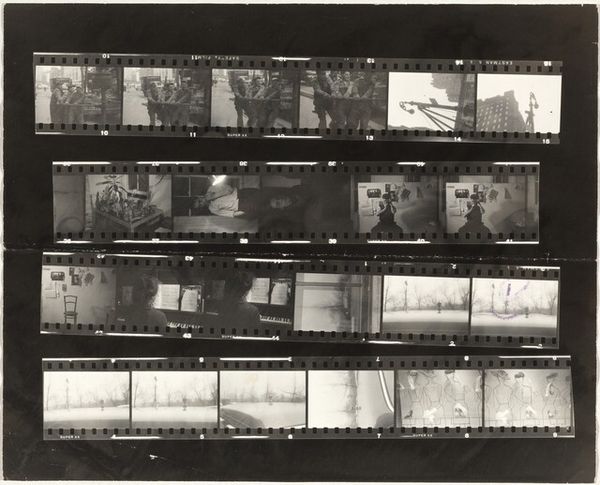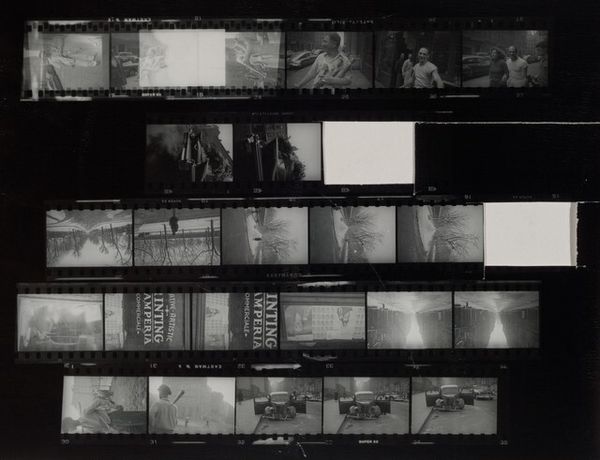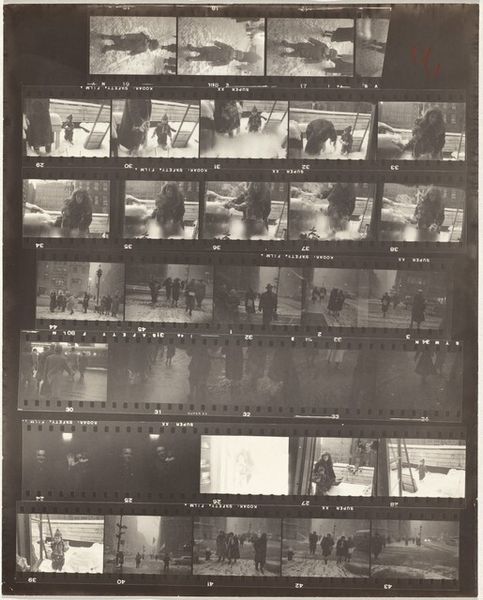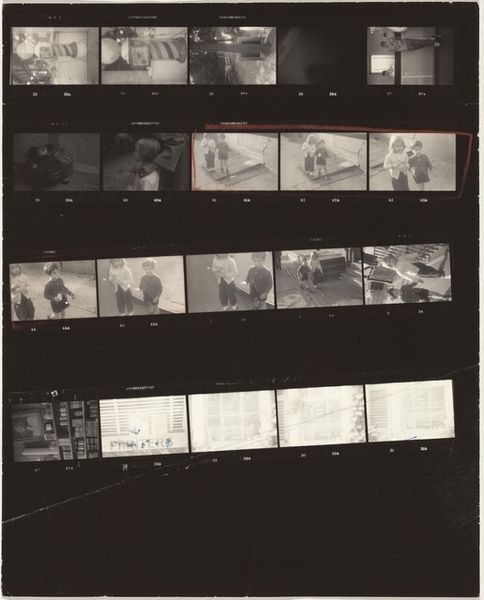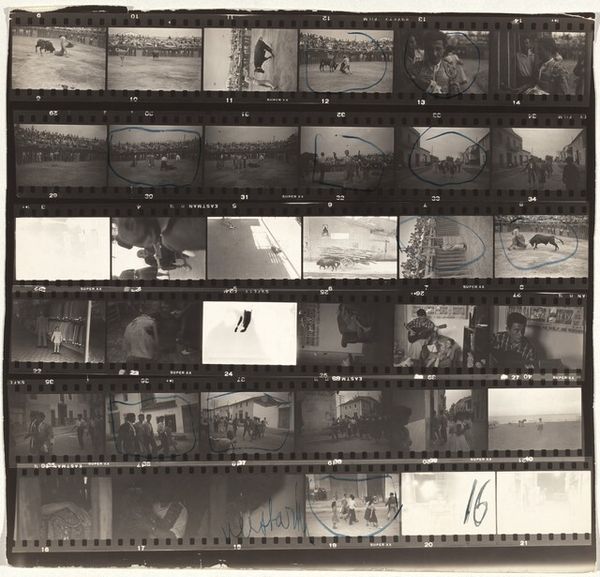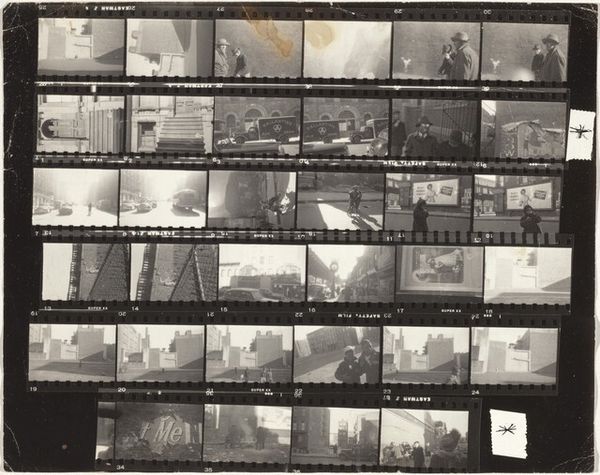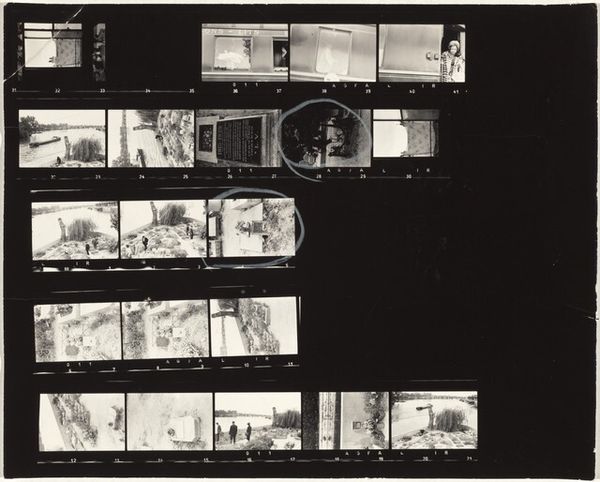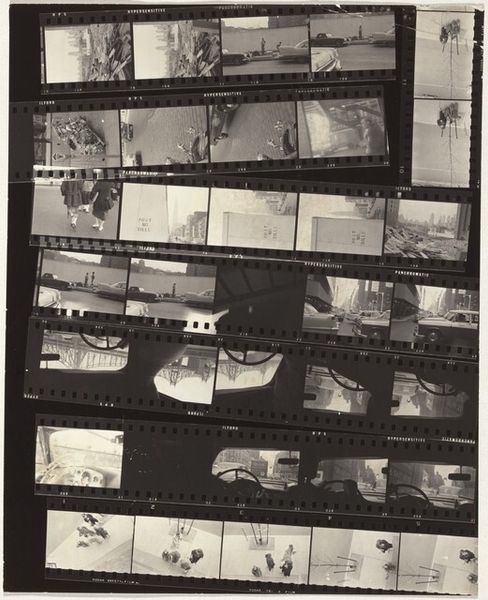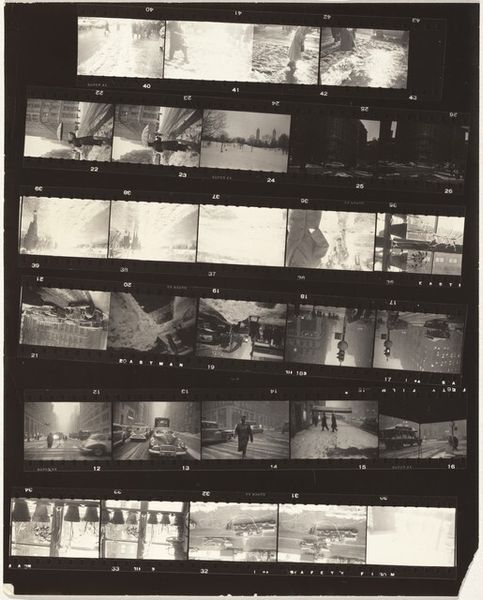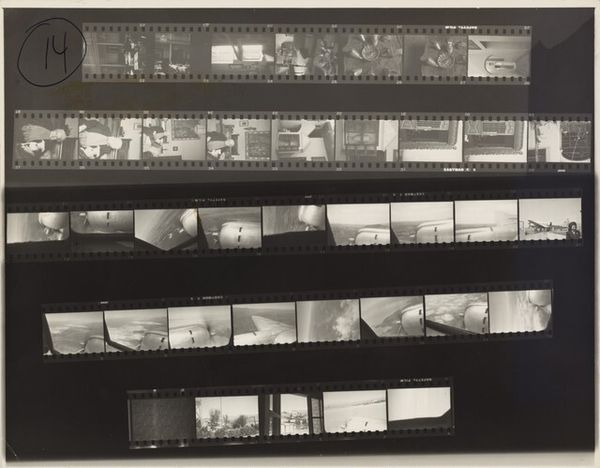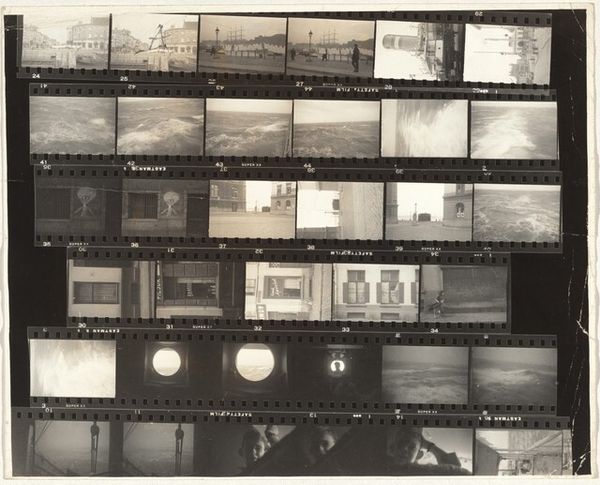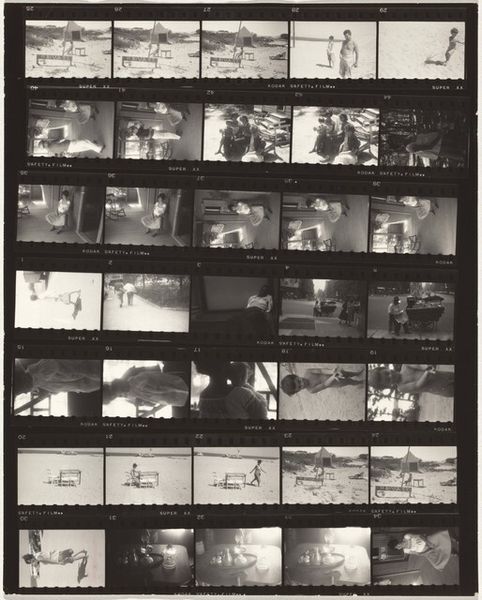
Dimensions: overall: 20.3 x 25.3 cm (8 x 9 15/16 in.)
Copyright: National Gallery of Art: CC0 1.0
Editor: We're looking at Robert Frank’s “Trip from Switzerland to Paris no number” from 1949, a gelatin silver print. It’s basically a photographer's contact sheet with varied vignettes. The contrast between the dense and open compositions creates such an unusual visual rhythm. What draws your eye, and how do you interpret Frank's intention in this format? Curator: Initially, it's vital to consider the structural relationships within the sheet. Observe how Frank organizes these fragments, which are studies in light and form. The gelatin silver process, allowing for rich tonal variation, enables him to articulate gradations of light that carve out shapes and spaces. Semiotically, the windows appearing multiple times acts almost as a framing device. Note that Frank employs line, shadow, and shape to orchestrate visual encounters with modern life. Editor: It feels almost accidental, but surely there's deliberate curation in the sequence of images, right? Curator: Indeed. This tension between apparent spontaneity and constructed order generates much of its allure. Frank uses juxtaposition as a core device. For example, consider the series of images across the middle. This plays with repetition but provides subtle variation. It becomes clear that he sees beauty in geometric arrangement and capturing form in unexpected locations. Is that what you observe too? Editor: I never thought about reading it that way, looking for patterns and form and thinking less about it being a straight documentary record. Curator: Precisely! Engaging with the interplay of texture and shape refines our understanding and highlights what matters. Thank you for expanding my own understanding.
Comments
No comments
Be the first to comment and join the conversation on the ultimate creative platform.
